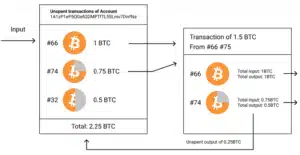Exploring the Key Differences: High Availability vs. Fault Tolerance

As technology becomes more important to contemporary businesses, its dependability becomes more important. Two concepts in information technology (IT) characterize a system’s resilience: fault tolerance and high availability. While both improve dependability, they tackle the problem from distinct perspectives.
The capacity of a system to continue running even when one or more components fail, with minimum effect on the end user, is referred to as fault tolerance. This is accomplished via redundancy, which involves deploying many components to offer the same functionality.
High availability reduces downtime for end users and guarantees timely problem identification and resolution. This is accomplished using failover systems, which immediately transition to a backup system in case of a breakdown, reducing end-user disturbance.
So, which is superior? The system’s unique needs determine it. Fault tolerance may be the superior choice if a system has high resilience and can continue to operate even when components fail. However, if the system must be as accessible to end users as feasible, high availability is generally the superior option.
Table of Contents
What is High Availability?
High-availability servers are meant to have the highest possible uptime by eliminating all single points of failure to keep mission-critical applications and websites operational during catastrophic events such as traffic surges, malicious assaults, or hardware breakdowns. Essentially, HA is building infrastructure redundancy to remain up. Redundancy may exist without high availability, while high availability can only exist with redundancy.
High availability is achieved by enabling a backup system to take over in the case of a primary system failure. It employs a mechanism for shifting services from a failing main system to a working secondary system (also known as a crossover). This approach is often software-based, with a monitoring component detecting a malfunction and initiating a transfer of traffic or resources to the backup computer.
What Is Fault Tolerance?
Failure happens in all IT systems at some time. If the whole system fails and another system steps in to take its place, availability is maintained. But what if the system in which the breakdown occurred continues to function normally? This kind of technology is known as fault tolerant.
System variations include high availability and fault tolerance. High availability systems can tolerate faults that cause downtime and request rejection, although this occurs seldom. On the other hand, fault-tolerant systems may recover from failures and continue to react without a backup system. For example, an IaaS service provider with numerous servers may have high availability, but a power loss might interrupt operations, preventing main and backup servers from responding to customer requests.
Top 3 Differences of High Availability and Fault Tolerance
High availability vs fault tolerance both strive for business continuity and system dependability. However, they vary in terms of design and strategy. Let’s look at the critical distinctions between high availability and fault tolerance.
Operations
High Availability
With a target of 99.999% uptime, high availability attempts to avoid downtime and minimize service loss. It is often paired with fault tolerance, although it is more expensive and difficult to maintain. Unlike fault tolerance’s considerable hardware and software investment for redundancy and failure detection, high availability may be accomplished in certain system subsets such as load balancing, limiting downtime, and resource sharing, making it a more lightweight solution.
High availability is adequate in many applications.
Fault Tolerance
Fault-tolerant systems emphasize business continuity by responding quickly to disturbances caused by single points of failure. They use automatic switches to back up components when the main components fail. System resilience is improved by hardware and software solutions.
Fault tolerance is often used for mission-critical systems and applications and may be classified into multiple levels:
- The most fundamental level of fault tolerance is a system’s capacity to adapt to obstacles such as power outages and internet failures.
- The next level is generally the ability of a system to instantly switch over to a backup arrangement in the event of a failure.
- Fault tolerance may also apply to individual components. For example, in a disk failure, a fault-tolerant system is intended to swap to a mirrored drive immediately. Such a configuration would remain operational even in a partial system failure, eliminating the need to switch to a mirror totally.
- There are also high-level fault tolerant systems, which use numerous processors to scan data collectively and instantaneously repair any problems.
- Finally, fault tolerance may be directly incorporated into the operating system, enabling programmers to monitor crucial data at precise system points.
Techniques
High Availability
High availability employs load balancing, clustering, and redundancy to achieve high uptime.
Load Balancing
High availability load balancing (HALB) uses main and secondary balancers to uniformly transfer workloads across data centers, providing ongoing application delivery. Key features include load balancer and server redundancy, DDoS protection, health checks, and faster response times.
Clustering
High availability clustering pools host bandwidth to ensure continuous operation. Clusters provide load balancing, failover, and shared storage access, allowing VMs and applications to transfer seamlessly.
Redundancy
By providing automated backup components in the event of a main failure, redundancy ensures high availability and fault tolerance. Non-redundant parts introduce single points of failure into the system, reducing system dependability. Backup power, load balancing, and redundant hardware are all methods.
Fault Tolerance
Fault tolerance employs strategies such as replication and failover to enable uninterrupted operations even during partial failure.
Replication
When nodes die, replication-based fault tolerance repeats data across systems, ensuring system resilience. Server coordination, client communication, agreement, execution, and response are all covered by protocols. Different consistency criteria, such as sequential and causal, are utilized. Fault tolerance, scalability, and performance are all affected by replication levels.
Failover
A failover system in fault tolerance is meant to automatically activate a secondary platform to keep a system or application functioning in case of a main platform failure. During this period, IT staff are often expected to prioritize fixing the major platform and bringing it back up.
System Design
High Availability
High availability necessitates redundancy analysis, and zero-downtime solutions use modeling and simulation for proactive maintenance and upgrades. Fault instrumentation identifies component problems so that targeted remedies may be implemented.
Passive redundancy improves performance by using excess capacity, while active redundancy employs parallel identical components. Through controlled component shutdowns, redundancy simulation analyzes system capacity. Automation is critical for high availability since it reduces human-caused system disruptions.
Fault Tolerance
The following features are required for the basic system design for fault tolerance.
Fault Detection
In the case of a failure, the system must identify the malfunctioning component. To do this, the system must be equipped with specific failure detection methods. Faults are classified according to their source, effect, location, and duration.
Single Point of Failure Removal
Any single point of failure within the system must be made redundant so that the entire system may continue to operate without interruption, even if one or more components fail.
Reversion Mode Availability
After a failed repair, reversion mode provides a smooth return to the previous system configuration, avoiding downtime or data loss.
Fault Containment
In the case of fault propagation, a firewall or equivalent device is required to confine the problem and protect the system’s integrity.
Conclusion
In summary, high availability and fault tolerance are two independent ways to maintain system dependability and uptime. High availability avoids downtime and provides continuous access to services, generally accomplished via redundancy and load balancing. Fault tolerance, on the other hand, uses more complicated and expensive strategies to retain system operation despite failures.
The decision between HA and FT is determined by the system or application’s unique needs. It is fairly commonplace for systems to include components of both techniques to balance continuous availability and strong error recovery. Finally, the choice should be driven by the system’s criticality, financial restrictions, and the tolerable degree of downtime in the setting.
High availability and fault tolerance will continue to be essential for architects and engineers striving to develop dependable, resilient, and efficient systems as technology advances.









